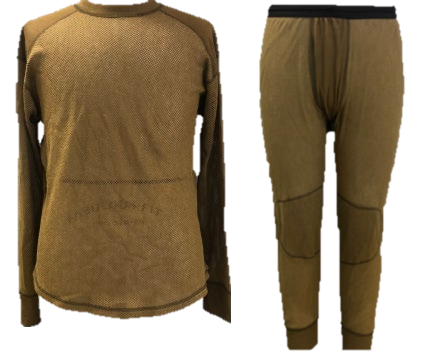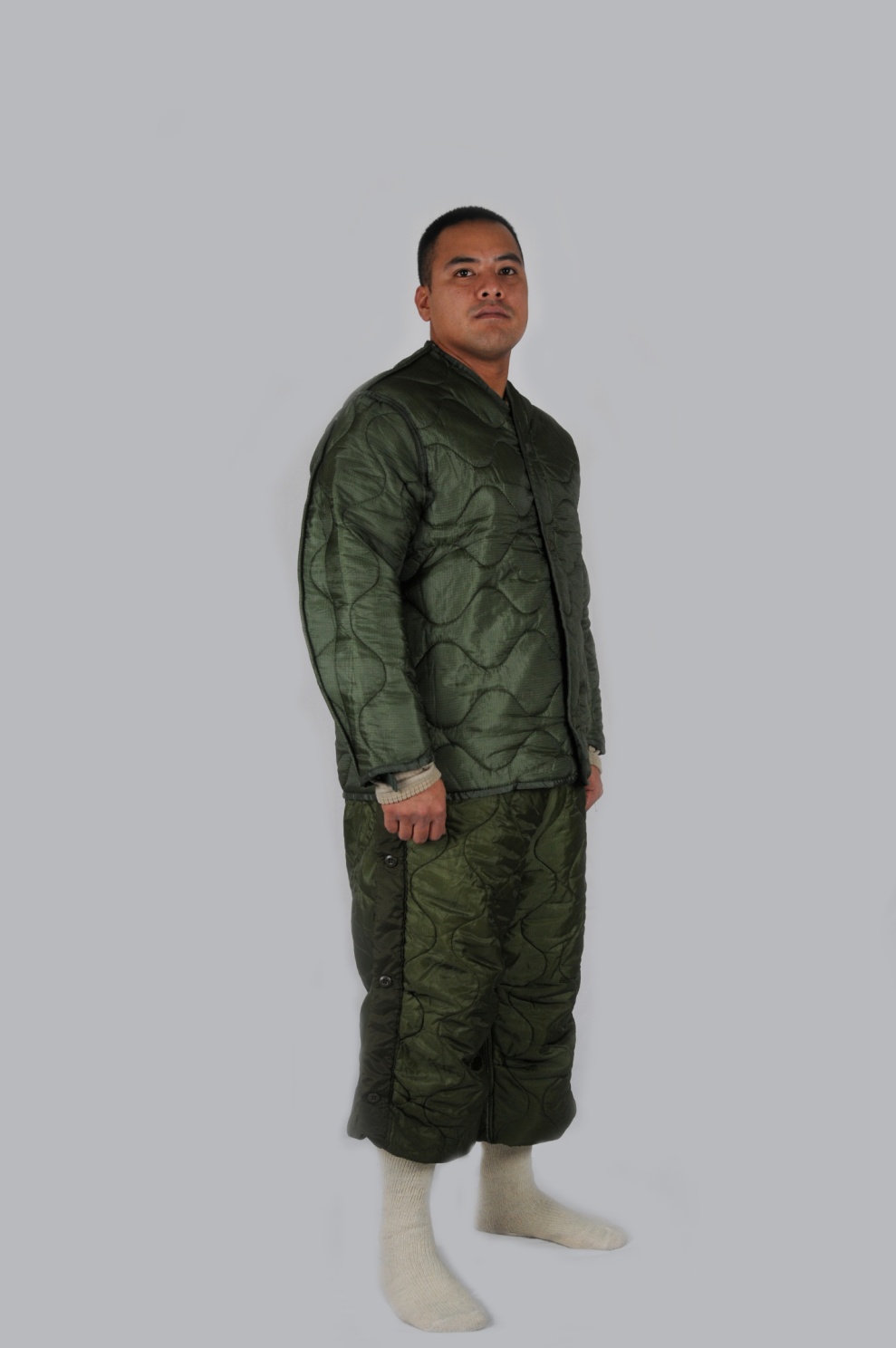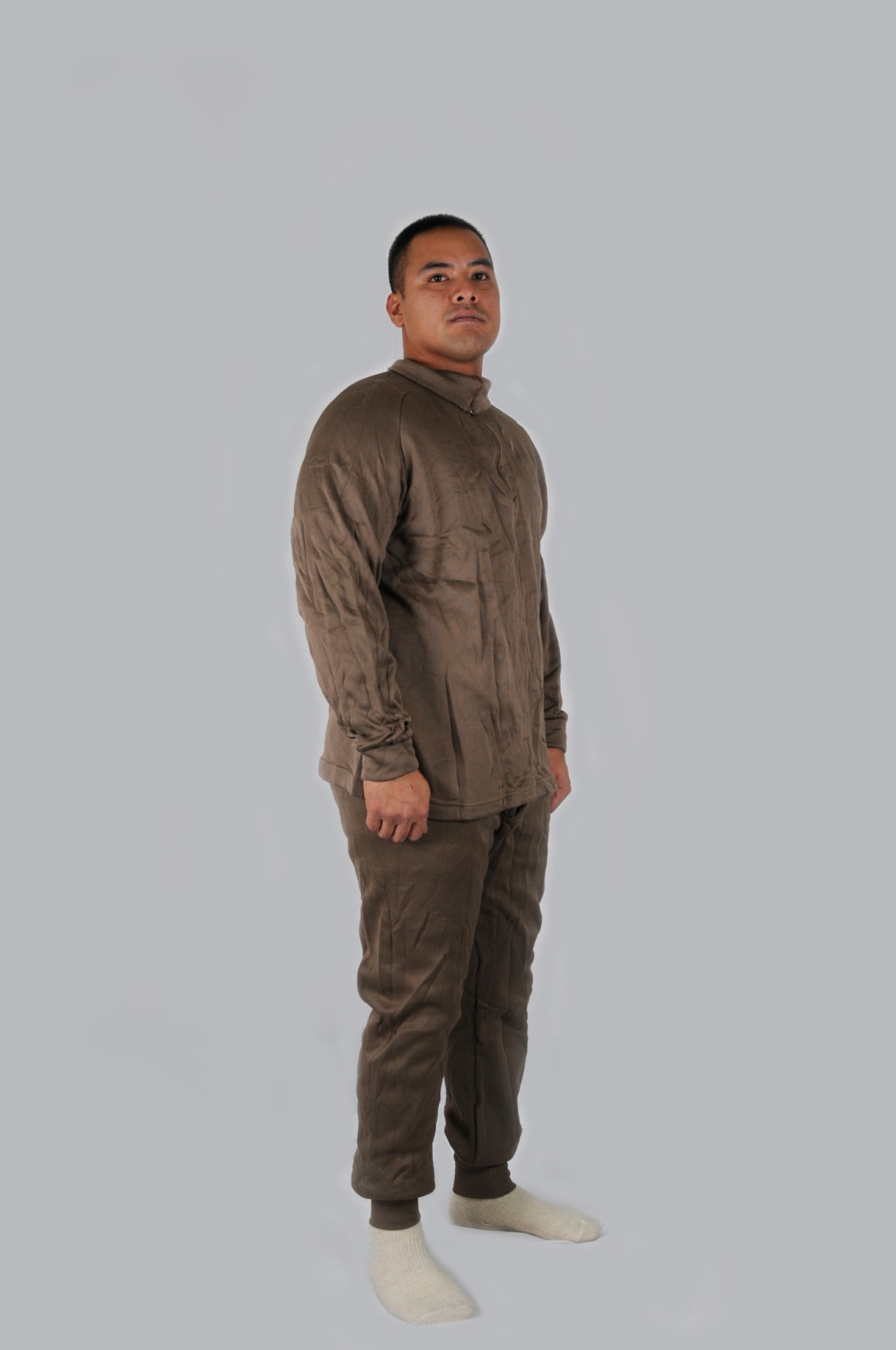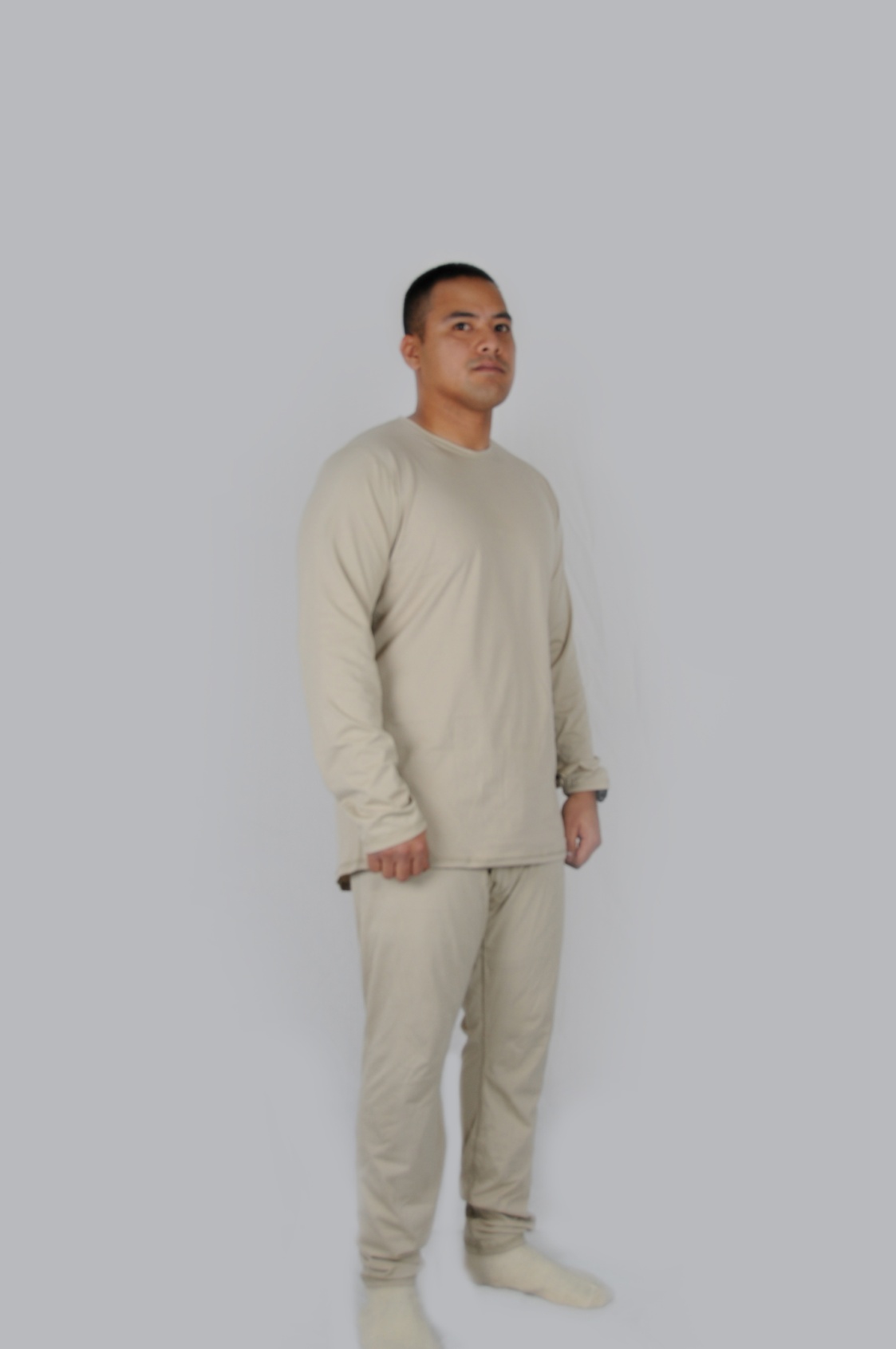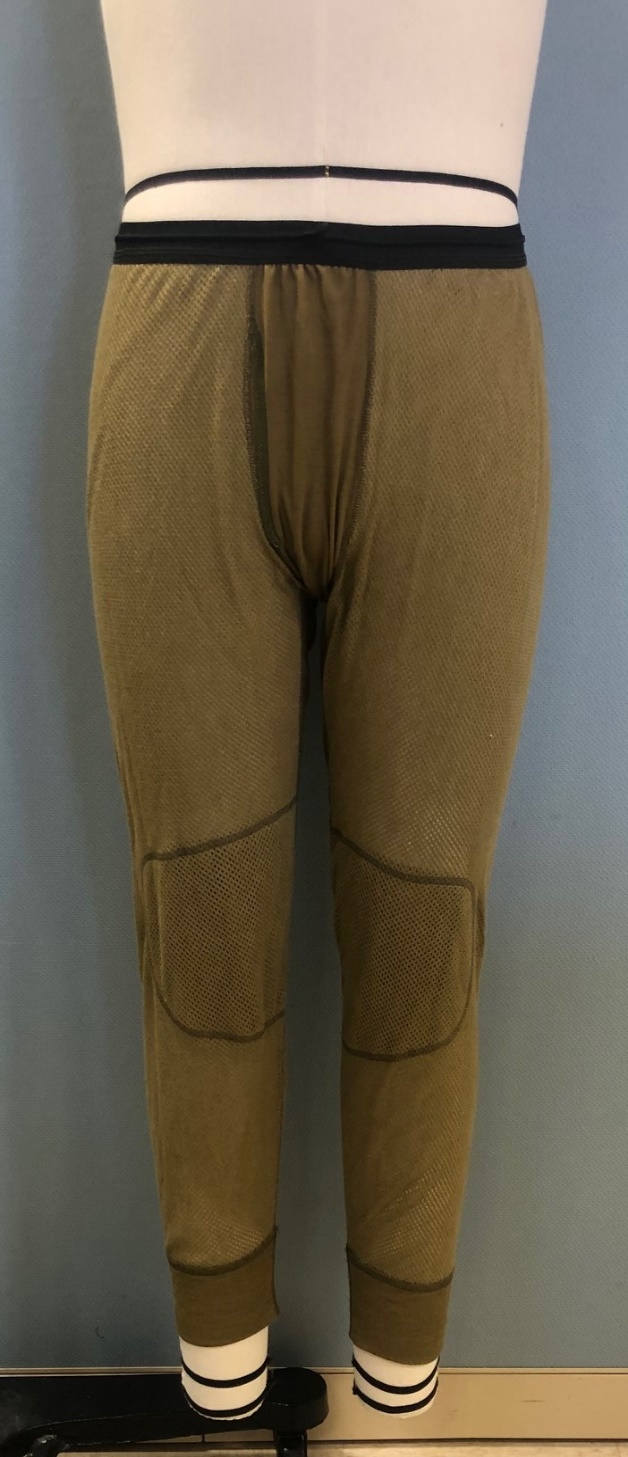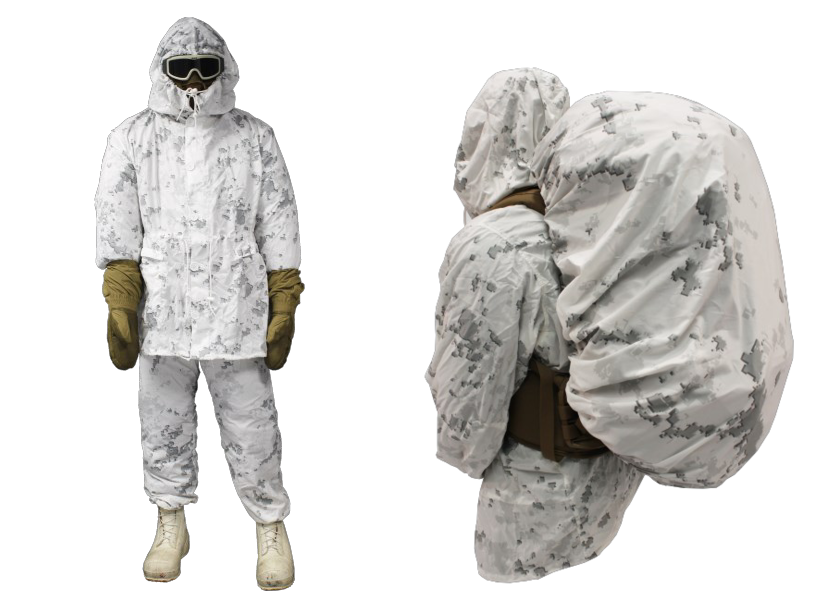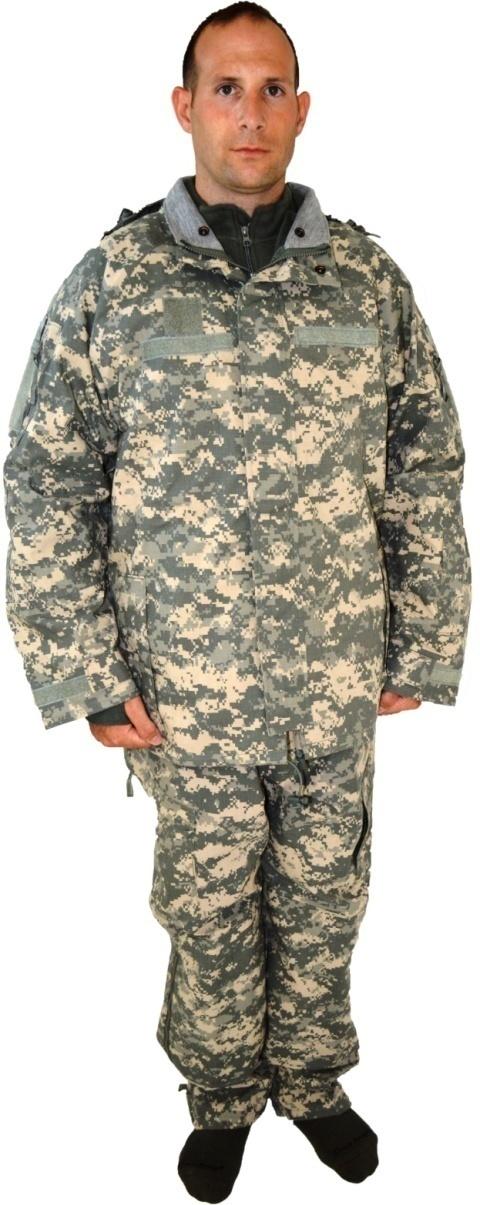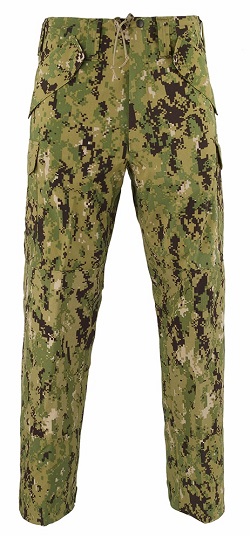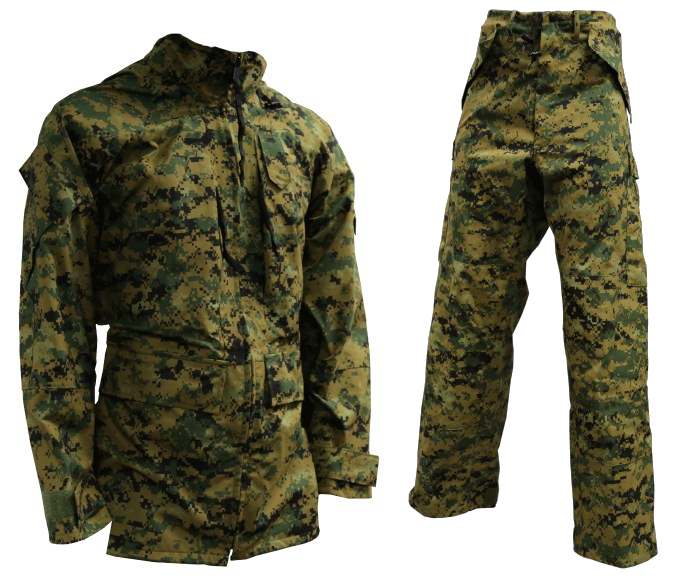
The All Purpose Environmental Clothing System (APECS) parka and trousers were developed to provide Marines with an all-purpose/all-season set of outershell garments that are lighter in weight, lower in bulk, have lower noise generation, are moisture vapor permeable and have an improved water repellency over the 2nd Generation ECWCS parka and trousers. The APECS also incorporates the Marine Pattern.
